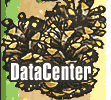The Litchfield Green, located within a local and National Register Historic District, is a long, narrow park situated along East and West Streets where they intersect with North and South Streets. It is divided into three sections by the intersections of the streets and are known as "West Park,""Center Park and "East Park." East and West Park are heavily shaded with numerous shade trees including maple, oak and ash. Twenty-five of these trees are memorial donations with identification plaques. A small tourist information booth is located at the east end of West Park. West Park is actually divided into two sections as its western point is cut off from the main sections of the green by a roadway leaving only a small triangular open greensward at the eastern end of the green.
Center Park, more sparsely planted, is the site of seven monuments, a Civil War cannon and a flagpole. The Civil War Memorial, and obelisk, is located near the center of the green in the bowl of the Y-shaped path. The other larger monuments (World War I, World War II, Korean and Vietnam) are located in the southwest corner. A memorial fountain marks the site of a recruiting tent on the green during the Civil War. Some benches on the green also bear memorial plaques.
The Congregational Church is dramatically sited on the northeast corner across from the green. It was constructed in 1829 and rebuilt 100 years later after it had been converted to an armory and dance hall. In the process, it was moved back to its original site. Other significant institutional buildings clustered around the green include the county jail (1812) still used as such; the courthouse (1889), and the Methodist Church (1885). Across from it are the town offices.






![]()